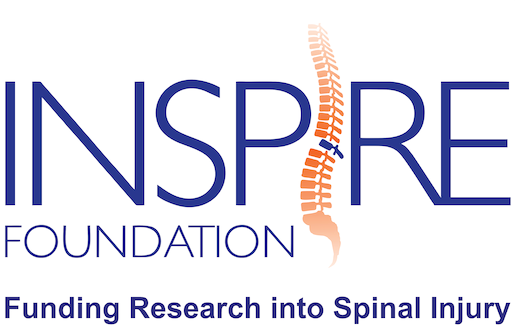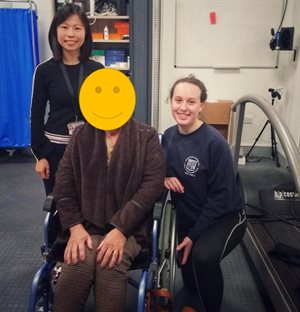Arm cycling exercise for improving trunk function after spinal cord injury – with Joeri van Helden
 Many people with spinal cord injury (SCI) have reduced control of their trunk muscles. Trunk control is important in maintaining upright posture and stability while carrying out functional activities such as reaching for or carrying an object, transferring, and walking. Loss of trunk control can have a severe impact on day-to-day life. The therapies currently available for trunk rehabilitation are far from ideal, as they are very time consuming and require a great deal of help and support from therapists and carers. This limits how much they can be used (e.g. can only be used in therapy departments, or at home but with a carer present), which may impact upon patients’ recovery.
Many people with spinal cord injury (SCI) have reduced control of their trunk muscles. Trunk control is important in maintaining upright posture and stability while carrying out functional activities such as reaching for or carrying an object, transferring, and walking. Loss of trunk control can have a severe impact on day-to-day life. The therapies currently available for trunk rehabilitation are far from ideal, as they are very time consuming and require a great deal of help and support from therapists and carers. This limits how much they can be used (e.g. can only be used in therapy departments, or at home but with a carer present), which may impact upon patients’ recovery.

Our work has shown that arm exercise may be used to improve trunk muscle function (1, 2, 3). When the spinal cord is damaged, connections between the brain and the muscles are impaired, which reduces the function of those muscles. Research has shown that this may be improved by strengthening the connections between the brain and the muscles that may be achieved through exercise; specifically, the functioning of the trunk muscles may be influenced by arm exercise.
Although arm cycling is a commonly used exercise for people to maintain heart and lung function, it is not used to directly improve the trunk muscle function and its control. It is therefore not known if any improvements (e.g. in functioning of the arms) can be attributed to improvements in the trunk.
We are recruiting people with spinal cord injury to take part in this project to help us understand the effects of arm cycling exercise on trunk stability and balance. We hope that by the end of this project we are able to generate a rehabilitation programme that is simple, affordable, and effective, and can be carried out in the home environment.
Click here if you are interested in taking part in the project
Reference 1: Chiou SY, Morris L, Gou W, Alexander E, Gay E. Motor cortical circuits contribute to crossed facilitation of trunk muscles induced by rhythmic arm movement. Sci Rep. 2020; 10: 17067.
Reference 2. Chiou SY, Strutton PH. Crossed Corticospinal Facilitation Between Arm and Trunk Muscles Correlates With Trunk Control After Spinal Cord Injury. Front Hum Neurosci. 2020; 14:583579.
Reference 3. Chiou SY, Strutton PH, Perez MA. Crossed corticospinal facilitation between arm and trunk muscles in humans. J Neurophysiol. 2018; 120:2595-2602.